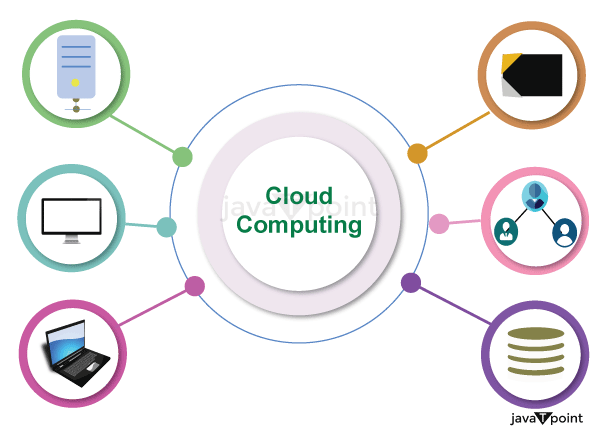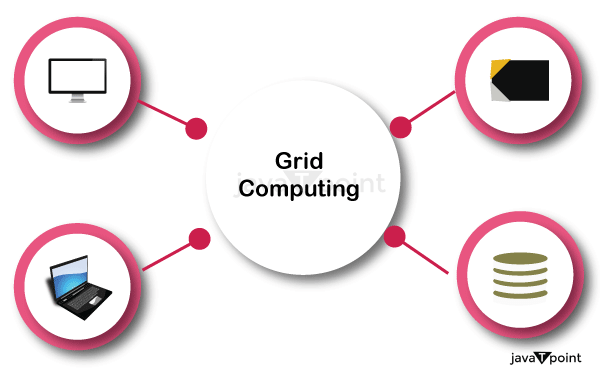Difference between Cloud Computing and Grid Computing
Cloud Computing

Client-server architecture is used by cloud computing to distribute computer resources over the internet. It provides a pay-as-you-go pricing structure, allowing businesses to only pay for the resources they actually use.
Due to its benefits, such as cost savings, increased productivity, efficiency, and performance, data backups, disaster recovery, and security, cloud computing has grown in popularity.
It does away with the requirement for up-front infrastructure expenses and enables businesses to increase resources fast. Additionally, it offers automated management, allowing IT professionals to concentrate on important jobs. Global data centers, strong data backup and disaster recovery capabilities, and improved security features to safeguard data and maintain regulatory compliance are all provided by cloud computing.
Grid Computing

Grid computing, also known as distributed computing, links various computing resources, including desktop computers, workstations, servers, and storage components. Users who have access to these resources can make use of the available processing power and storage space.
The main advantages of grid computing are accelerated work completion and higher user productivity. Grid computing increases user productivity by making resources easily accessible while openly granting access to a wide variety of computer resources.
Users can save time and effort by no longer having to handle and maintain their own exclusive resources on their own. Grid computing also enables parallel processing and distributed data storage, allowing tasks to be accomplished more quickly by combining the power of numerous resources.
Difference between Cloud Computing and Grid Computing:
|
Cloud Computing |
Grid Computing |
| Computing Architecture |
complies with the client-server computing architecture. |
Follows a distributed computing architecture. |
| Scalability |
The high scalability provided by cloud computing enables effective resource management and allocation. |
Grid computing delivers typical scaling. Thus, it might not give as much scaling as cloud computing. |
| Flexibility |
Compared to grid computing, cloud computing is more flexible. |
In comparison to cloud computing, grid computing is less flexible. |
| Management System |
Cloud servers are owned and controlled by infrastructure providers in a centralized management system used for cloud computing. |
Grid computing functions as a decentralized management system, with the organization owning and running the grids. |
| Ownership |
Infrastructure providers own and oversee cloud servers. |
The organization is the owner and manager of the grids. |
| Service Models |
Service paradigms like Infrastructure as a Service (IaaS), Platform as a Service (PaaS), and Software as a Service (SaaS) are used in cloud computing. |
Systems like distributed computing, distributed information, and distributed ubiquitously are used in grid computing. |
| Orientation |
Service-oriented cloud computing focuses on providing various services over the Internet. |
Grid computing is application-oriented, emphasizing the resolution of challenging issues that call for substantial computational resources. |
| Accessibility |
Because it can be accessed using common web protocols, cloud computing is widely available and simple to use. |
Grid middleware, which offers the essential software architecture for resource coordination and communication, makes grid computing accessible. |
| Resource Management |
Dynamic resource management and allocation are provided via cloud computing. |
Grid computing includes managing and allocating static resources. |
| Cost Model |
Users pay for the resources they use in a pay-as-you-go model, which is typical of cloud computing. |
Given that resources are owned and devoted within the organization, grid computing frequently has set costs. |
| Focus |
Delivering customers with storage, services, and computing resources as needed is the main goal of cloud computing. |
Grid computing is focused on pooling and managing computer resources via a network for certain projects or applications. |
| Collaboration |
Through centralized platforms and tools, cloud computing makes it easier for people to collaborate and share data. |
Through grid middleware, grid computing facilitates collaboration between users and dispersed resources. |
|


 For Videos Join Our Youtube Channel: Join Now
For Videos Join Our Youtube Channel: Join Now










